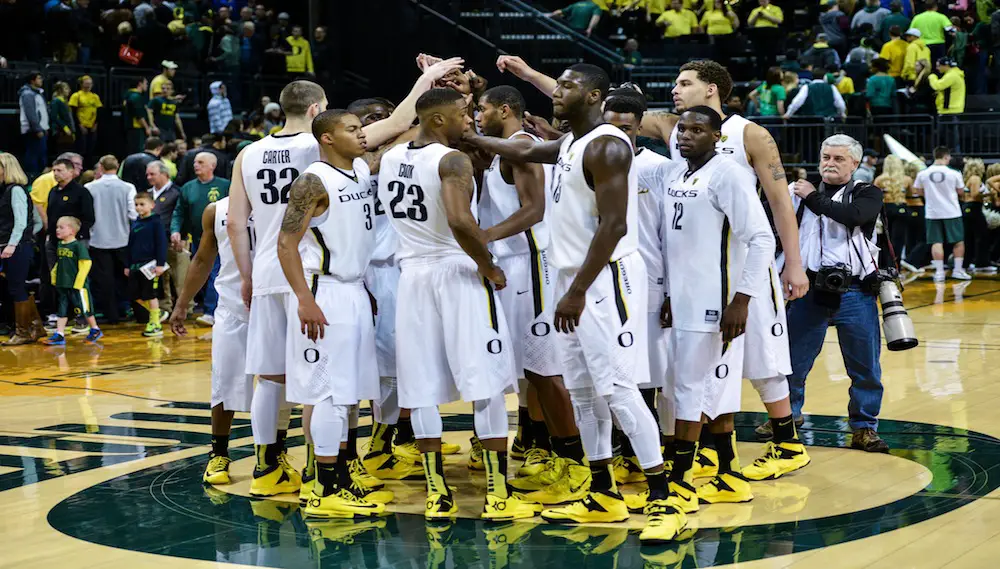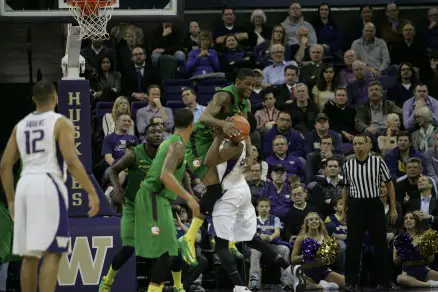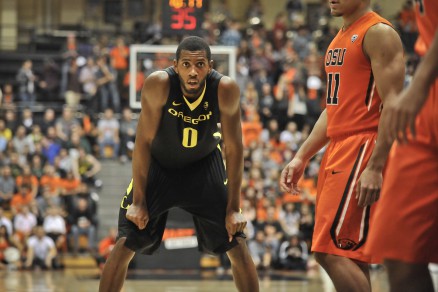In November, the Oregon Ducks (15-8, 3-8 Pac-12) seemed to be a prime contender for a deep run into March Madness, winning its first 13 games and reaching the No. 10 ranking in the AP Poll. That incredible start now seems miles away since they reached conference play, as the Ducks are 10th in the Pac-12 standings, and they have only seven games left to make up ground.
It has been a long season for Oregon since matching their school’s best record to start a season. Of their last six losses, five have come by a margin of four points or smaller.
If a few plays went differently, these games could’ve been quality wins for the Ducks; three of the five losses came to the top three teams in the Pac-12, including No. 2 Arizona (23-1, 10-1 Pac-12) and the UCLA Bruins (18-5, 7-3 Pac-12).
What seems to be the missing piece is someone to close out a game, much like E.J. Singler did for Oregon last season. In his four years at Oregon, Singler averaged .849 percent from the free throw line – which aided in the Ducks upset over the Wildcats last year.
This year against the conference’s best, Jason Calliste and Dominic Artis missed late free throws, which sealed the win for the Wildcats. The teams combined for an ugly 31-for-53 performance from the line, but in the end, the Ducks suffered from the loss.
According to Joe Lunardi’s Braketology on ESPN.com, Oregon is projected as one of the next four out of the on-the-bubble teams, and that is about the range other experts have predicted as well.
They’re ranked 41st in the RPI, but 23rd in the BPI; the BPI was created to be the most comprehensive college basketball analysis rating systems. Rich Kurtzman, also of ESPN, gives a detailed explanation of the differences here. http://www.examiner.com/article/college-basketball-rankings-espn-s-bpi-explained
Fortunately, Oregon’s next three games are at home. Maybe that will help improve their FG accuracy – as a whole, the team’s field goal percentage has dropped to .465 percent, which is 71st in the nation.
The Ducks will play the Oregon State Beavers (13-10, 5-6 Pac-12) on Sunday, Feb. 16, and they will look to avenge the six-point loss in Corvallis suffered late January. The Beavers have also endured struggles this year, and, like the Ducks, are coming off losses to Arizona and Arizona State.
Oregon must come with a sense of urgency on the offensive end. The last time the two met, the Beaver’s held Oregon to just 38 percent shooting. Ducks leading scorers Joseph Young and Mike Moser, combined for a mere 13 points; much more production is needed out of those two if Oregon is going to compete.
Three days after that, Washington (13-11, 5-6 Pac-12) will visit Eugene to try and sweep the Ducks on the year. The Huskies edged Oregon out by four points in their first meeting.
This was a result of a 26.7 percent performance from three-point range. At the start of the year, the Ducks were one of the most efficient and lethal teams from behind the arc, but lately, that reliance on the three has come back to haunt them.
There are still many opportunities for Oregon to climb back up the standings before the Pac-12 Tournament. If the Ducks are able to win the tourney, it will guarantee them a spot in the tournament, but they must gain some momentum with a strong final stretch. Final games between UCLA, Arizona and Arizona State are also still yet to be played.
Top Photo By Steve Francis
Related Articles:
Chip Kelly Update: Everything's Good Again ...
Chip Kelly Update: Wailing and Gnashing of Teeth
Shock and Awe -- The Oregon Ducks' Football Hangover Effect
Despite Lopsided Score, Georgia State "Never Stopped Believing"
Hope Springs Eternal for Ducks
Incompetent Pac-12 Officials: How Do You Miss ALL of THIS?
Bryan Holt is a 20 year old junior at the University in Oregon looking to major in Journalism and Communications with hopes in pursuing a career as a sports writer or analyst.



